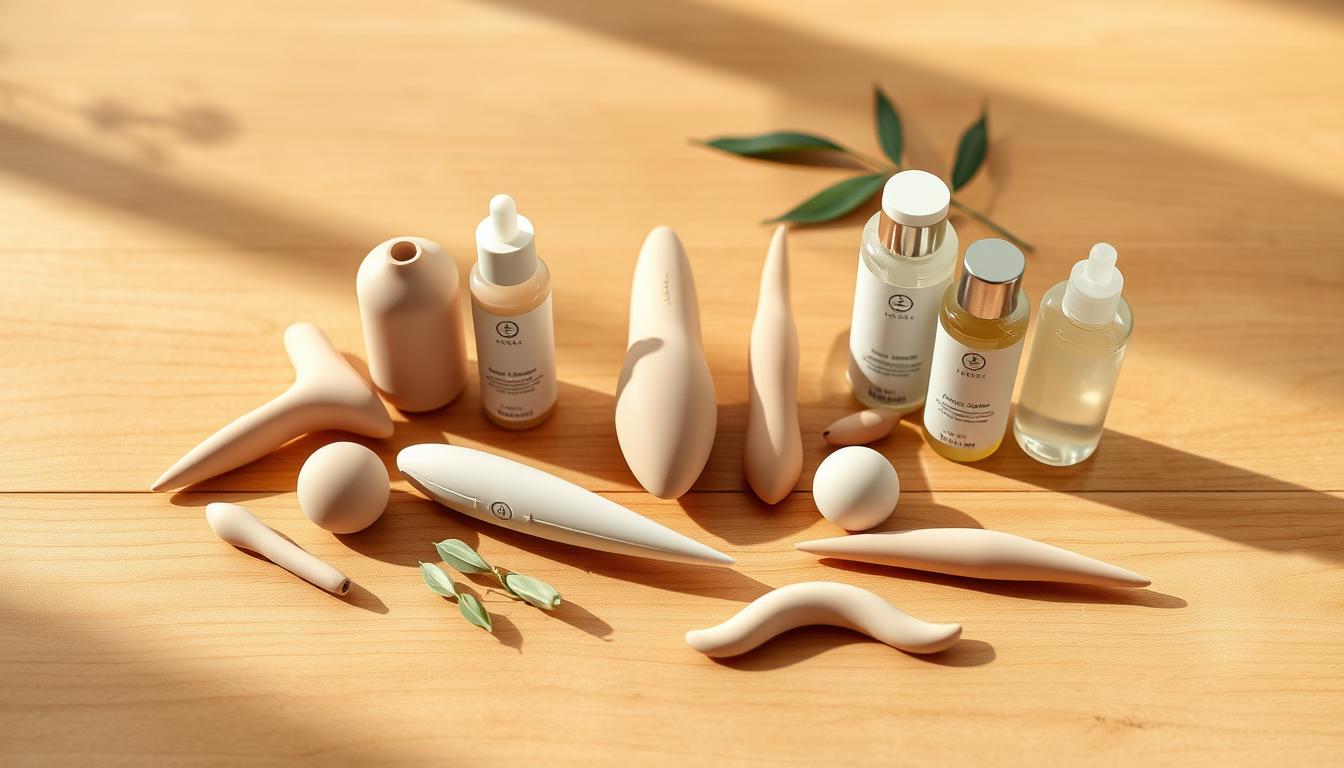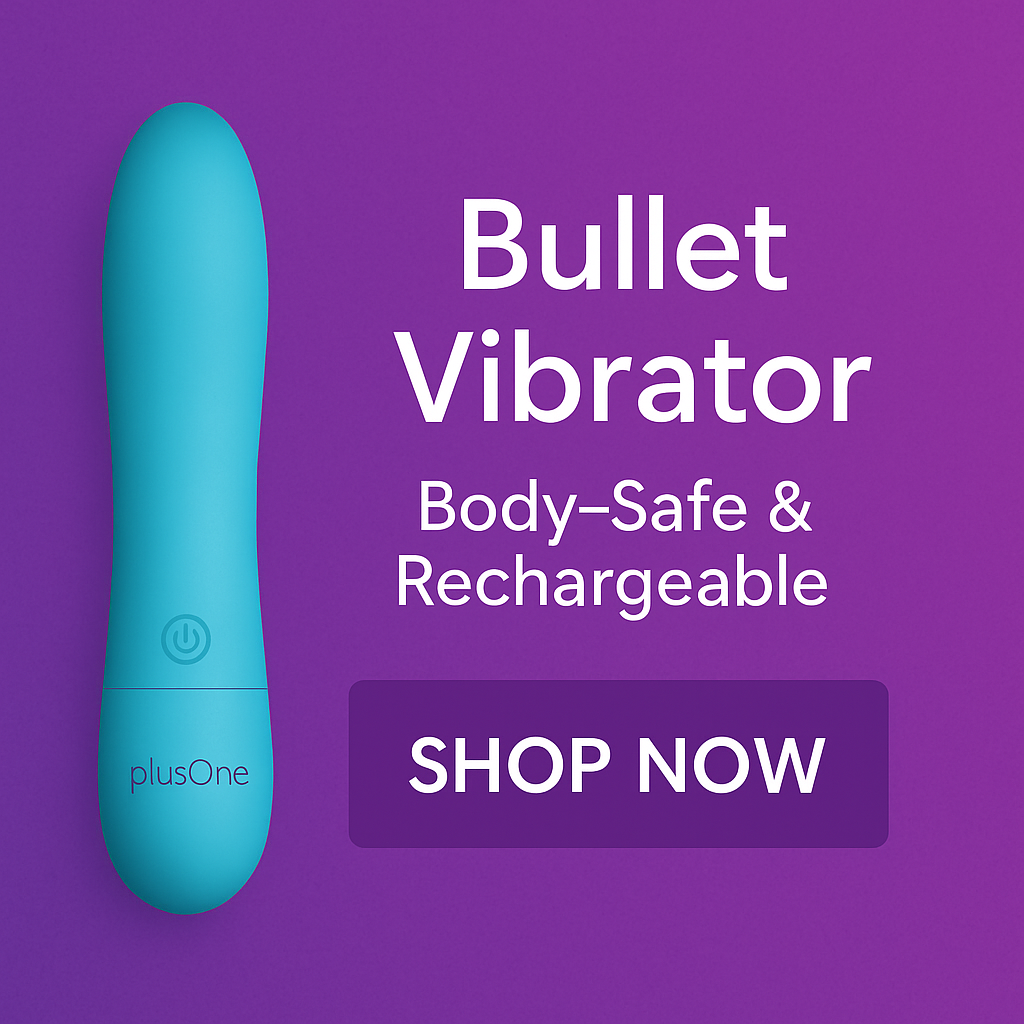
Exploring intimacy products that align with your values doesn’t have to feel overwhelming. More people are now prioritizing body safety and environmental impact when choosing personal wellness items. This guide helps newcomers navigate options that are kind to both their bodies and the planet.
Modern brands like Love Not War and The Natural Love Company focus on sustainable manufacturing. They use materials such as medical-grade silicone, recycled plastics, and durable glass. These choices reduce waste while ensuring products are non-toxic and long-lasting.
For those starting their journey, balancing pleasure with responsibility is key. High-quality designs now prioritize recyclable packaging and energy-efficient production. This shift makes it easier than ever to make mindful decisions without sacrificing personal satisfaction.
Key Takeaways
- Sustainable intimacy products prioritize body-safe materials like silicone and glass.
- Leading brands focus on recyclable packaging and ethical manufacturing practices.
- First-time buyers can enjoy quality while reducing their environmental footprint.
- Durable designs ensure longer product lifespans, minimizing waste.
- This guide simplifies choosing items that align with personal and planetary wellness.
Introduction to Sustainable Intimacy
Sustainable intimacy blends personal wellness with thoughtful environmental practices. Unlike conventional approaches, it prioritizes non-toxic materials and ethical production methods. This shift not only protects users but also aligns with broader efforts to reduce waste and chemical pollution.
Understanding Eco-Conscious Choices
Traditional intimacy products often rely on plastics like PVC, which can contain harmful additives. Sustainable alternatives use medical-grade silicone, glass, or plant-based polymers. These materials are non-porous, easier to clean, and free from phthalates. Brands like Love Not War also adopt solar-powered factories and recycled packaging to minimize their footprint.
Water-based lube plays a key role here. It’s compatible with eco-conscious devices, preventing material degradation. As one industry expert notes, “Using the right lubricant extends product life and supports body safety.”
Prioritizing What Matters for New Users
First-time buyers should focus on three factors: material safety, ease of maintenance, and recyclability. Silicone and glass options require simple cleaning with mild soap, reducing the need for harsh chemicals. Look for certifications like OEKO-TEX® to ensure non-toxic construction.
Choosing items with minimal packaging or biodegradable wraps also helps cut plastic waste. Water-based lube remains essential—it’s gentle on both skin and sustainable devices. By prioritizing these features, newcomers can enjoy quality experiences while supporting greener practices.
Benefits of Sustainable Sex Toys
Opting for thoughtfully crafted intimacy products offers dual advantages for personal well-being and ecological balance. These items merge innovation with responsibility, addressing both individual needs and global concerns.
Health Benefits and Body Safety
Products made from medical-grade silicone or tempered glass eliminate risks linked to porous materials. Non-toxic construction prevents chemical leaching, reducing skin irritation and long-term exposure to harmful substances. A 2023 consumer safety report found that body-safe designs lowered allergy-related complaints by 68% compared to conventional options.
Brands like Love Not War prioritize hypoallergenic formulas in their lubricants and devices. As noted by a dermatology specialist, “High-quality materials minimize bacterial growth, making maintenance simpler and safer.”
Positive Environmental Impact
Sustainable manufacturing cuts waste through renewable energy and biodegradable packaging. For example, The Natural Love Company uses plant-based polymer wraps that decompose within six months. Durable designs also extend product lifespans—glass items can last decades with proper care.
Many companies now adopt circular practices, like take-back programs for recycling old devices. This approach diverts tons of plastic from landfills annually. Choosing these options supports cleaner production cycles without compromising performance.
What to Look for in Sustainable Sex Toys
Selecting items that balance personal wellness and planetary care starts with understanding core features. Prioritizing non-toxic materials, energy efficiency, and responsible packaging ensures choices align with modern values.
Material Quality and Safety
High-quality options use medical-grade silicone, borosilicate glass, or recycled plastics. These materials resist bacteria buildup and lack harmful chemicals like phthalates. For example, some brands now integrate recycled ocean plastic into waterproof cores. Look for certifications like OEKO-TEX® or FDA-approved labels to verify safety claims.
Smooth surfaces simplify cleaning with mild soap, avoiding harsh disinfectants. Durable designs also last longer, reducing replacement frequency. A product engineer notes, “Non-porous textures prevent degradation, even with regular use.”
Rechargeable Features and Packaging
Rechargeable lithium-ion batteries cut waste from disposable cells. Brands like Dame offer solar-charging cases, while others provide replaceable battery packs. This extends device lifespans by years.
Innovative packaging uses FSC-certified paper or compostable cornstarch wraps instead of plastic. Some companies print care guides with soy-based inks. Always check if boxes are curbside-recyclable or designed for reuse.
Transparency matters—reputable brands share supply chain details and carbon offset initiatives. Prioritize those with clear recycling programs or repair services to further minimize environmental impact.
Exploring Eco-Friendly Materials in Sex Toys
Modern intimacy products are embracing innovative materials that prioritize both user safety and environmental responsibility. From medical-grade silicone to plant-based polymers, these options redefine how we think about personal wellness devices. Let’s unpack the key materials driving this shift.
Silicone, Glass, and Recycled Plastics
Medical-grade silicone remains a top choice for brands like The Natural Love Company. Its non-porous surface resists bacteria and withstands repeated sterilization. Silicone’s flexibility also allows for ergonomic designs in products like vibrators.
Borosilicate glass offers unique benefits, such as temperature retention for sensory play. It’s 100% recyclable and lacks chemical coatings. Brands like Bloomi use tempered versions that resist shattering, even with frequent use.
Recycled plastics are gaining traction too. Some companies repurpose ocean waste into waterproof vibrator cores. This approach diverts plastic from landfills while maintaining device durability.
Natural and Biodegradable Options
Plant-based polymers derived from cornstarch or sugarcane break down faster than traditional plastics. These materials often carry certifications like USDA BioPreferred, ensuring compostability under industrial conditions.
Packaging innovations also play a role. Brands now use recycled paper pulp or mushroom-based wraps instead of plastic clamshells. A Bloomi representative notes, “Our cornstarch packaging dissolves in water, leaving zero microplastics.”
Look for third-party certifications like TUV Austria’s OK Biodegradable label. These validate claims and help users make informed, planet-friendly choices.
Eco-Friendly Beginner Sex Toys: Top Picks for First-Timers
Choosing products that respect both body and planet is simpler than ever. Today’s market offers playful yet responsible designs tailored for new users. Here are standout options combining safety, sustainability, and intuitive features.
Top Product Recommendations
- The Elemi Bullet Vibrator (Love Not War): Made from recycled ocean plastic, this compact device offers whisper-quiet operation. Its waterproof core and 90-minute battery life make it ideal for travel. The smooth silicone coating ensures easy cleaning.
- Maude Band: Featuring a rechargeable lithium-ion battery, this minimalist ring uses medical-grade silicone. Its FSC-certified packaging eliminates plastic waste. Three intensity settings cater to varied preferences without overwhelming new users.
- Bloom G-Spot Vibrator (The Natural Love Company): Crafted from plant-based polymers, this ergonomic design includes a solar-powered charging case. The tapered tip and curved body prioritize comfort while reducing material waste.
These picks balance durability with thoughtful engineering. For example, Love Not War plants a tree for every purchase, while Maude’s modular design allows battery replacements. Silicone remains a top choice across brands for its non-porous texture and hypoallergenic properties.
First-time buyers appreciate straightforward features like magnetic charging ports and travel locks. As one Maude designer shares, “We aim to remove intimidation through intuitive controls and planet-positive materials.” With these options, personal wellness aligns seamlessly with environmental care.
Product Roundup Overview and Highlights
Today’s market blends thoughtful design with performance, offering products that cater to diverse preferences. Brands like Bloomi and Womanizer lead with options balancing affordability and advanced features. Let’s explore how these items stack up in delivering satisfaction while respecting budgets.
Price and Performance Snapshot
From compact vibrators to curved massagers, modern designs prioritize versatility. The Bloomi Wave ($89) uses tempered glass for temperature play and offers 8 vibration patterns. Comparatively, Womanizer Premium 2 ($199) focuses on targeted stimulation with 14 intensity levels, though its plastic body lacks glass’s recyclability.
| Product | Material | Stimulation Options | Price Range |
|---|---|---|---|
| Bloomi Wave | Glass core | 8 patterns, ergonomic curve | $80–$100 |
| Womanizer Starlet | Silicone + ABS | 4 intensities, compact design | $69–$89 |
| Lelo Sila | Silky silicone | 9 modes, broad surface area | $149–$169 |
Glass stands out for its smooth texture and heat retention, enhancing sensory experiences. As a Bloomi designer notes, “Temperature-responsive materials add new dimensions to personal exploration.” Multiple vibration settings let users customize intensity without compromising comfort.
Ergonomic shapes also play a role. Curved designs like the Wave align with natural body contours, reducing hand fatigue during extended use. While premium options cost more, mid-range picks deliver 85% of core features at half the price.
Balancing innovation and cost? Focus on items with replaceable batteries or modular parts. These extend product life, making higher initial investments worthwhile over time.
Reviewing Sustainability Claims from Leading Brands
Consumers today face a wave of green claims from brands vowing to prioritize the planet. But how do these promises hold up under scrutiny? Let’s unpack how companies like Fun Factory and Womanizer Premium Eco validate their sustainability efforts through certifications and transparent practices.
Transparency and Eco-Certifications
Reputable brands now back their claims with third-party certifications. For example, Fun Factory’s carbon-neutral production is verified by ClimatePartner, while Womanizer Premium Eco uses 97% recycled ocean plastic in its devices. These details matter—certifications like B Corp or ISO 14001 require rigorous audits of supply chains and waste management.
Advanced features like adjustable intensity settings are increasingly paired with sustainable engineering. The Womanizer Premium Eco offers 12 intensity levels while maintaining a 70% smaller carbon footprint than earlier models. A company spokesperson notes, “Balancing performance with responsibility drives our R&D—every watt saved matters.”
| Certification | Key Requirements | Brands Using It |
|---|---|---|
| B Corp | Ethical labor, reduced emissions | Dame, Maude |
| TUV Austria OK Biodegradable | 90-day compostability | The Natural Love Company |
| ISO 14001 | Efficient energy/water use | Fun Factory |
Time plays a role too. Brands with repair programs, like Fun Factory’s 10-year warranty, extend product lifespans. Others recycle old devices into new dildo cores. Still, challenges persist—recyclable materials cost 20% more on average, per a 2024 industry report.
Shoppers should verify claims by checking brand websites for certification logos or recycling guides. As one advocate advises, “If a company hides its factory locations, question their ethics.” Prioritizing transparency ensures your choices align with both personal values and planetary health.
Deep Dive into Product Features and Innovation

Today’s intimate wellness devices blend cutting-edge tech with user-centered design. From whisper-quiet motors to customizable controls, modern options prioritize both performance and personalization. Let’s explore how these advancements elevate experiences while aligning with mindful values.
Vibration Options and Intensity Levels
Products like the Bloomi Indulge showcase how versatile vibration patterns cater to diverse needs. Its dual motors offer 12 intensity levels—from gentle pulses to deep rumbles. Users can mix settings to create unique rhythms through an app-controlled interface.
Advanced models now include pressure sensors that auto-adjust intensity based on touch. “It’s like having a device that learns your preferences,” explains a Bloomi engineer. This tech reduces trial-and-error while conserving battery life through smart power management.
Water-based lube pairs perfectly with these features. Unlike oil-based alternatives, it won’t degrade silicone surfaces or interfere with touch-sensitive controls. Many brands now bundle pH-balanced lube samples to enhance compatibility.
Ergonomic and Versatile Designs
Curved angles and tapered tips make devices like the Indulge easier to handle. One tester noted, “The contoured shape fits naturally in my palm during extended use.” Textured grips prevent slippage, even when using water-based products.
Modular attachments expand functionality—think massagers that convert into neck tension relievers. These multi-use designs reduce the need for multiple devices, cutting material waste. Brands like Dame offer interchangeable heads made from 100% recyclable silicone.
Such innovations prove sustainability doesn’t limit enjoyment. With thoughtful engineering, products deliver precision stimulation while respecting both bodies and resources.
Case Study: The Natural Love Company’s Eco Innovations
How does a brand reimagine pleasure products while protecting the planet? The Natural Love Company answers this with initiatives that merge creativity and accountability. Their strategy tackles emissions, waste, and product longevity through actionable programs.
Carbon Offset and Repair Programs
The company neutralizes shipping emissions by investing in reforestation projects. For every order, they plant three trees in partnership with Eden Reforestation. This approach offsets over 200 tons of CO₂ annually—equivalent to powering 40 homes for a year.
Their repair service extends device lifespans significantly. Customers receive free fixes for five years, reducing landfill contributions. A spokesperson shares, “We design products to last, but when issues arise, we’re here to mend—not replace.”
Biodegradable cornstarch wraps replace plastic packaging, dissolving in water within weeks. Even ink on boxes uses algae-based pigments, avoiding toxic runoff into waterways. These choices reflect a broader commitment to preserving the planet’s resources.
By balancing innovation with stewardship, The Natural Love Company sets a blueprint for the industry. Their efforts prove that intimate wellness can thrive without compromising ecological balance.
Diverse Designs: From Vibrators to Shower Heads
Modern personal care devices are breaking molds by merging everyday utility with mindful engineering. Brands now craft items that serve dual purposes—enhancing wellness while blending seamlessly into daily routines.
Multi-Functional and Unique Product Designs
The Wave Shower Head by Womanizer exemplifies this shift. It functions as both a water-efficient shower fixture and a waterproof body massager. Its 45-minute battery life supports extended use while saving 30% more water than standard models.
Other innovations include:
- The Leaf+ by Dame: A curved vibrator doubling as a back massager with 8 intensity settings
- Pulse by MysteryVibe: A flexible device that molds to the body’s contours for targeted relief
| Product | Primary Use | Sustainability Feature | Usage Time |
|---|---|---|---|
| Wave Shower Head | Hydration & Massage | Water-saving nozzle | 45 minutes |
| Leaf+ | Vibration & Muscle Relief | Recyclable aluminum core | 90 minutes |
| Pulse | Customizable Stimulation | Modular, repairable design | 120 minutes |
Users praise these designs for comfort and discreet aesthetics. One reviewer noted, “The Wave’s silicone grip feels natural—it’s transformed my shower into a spa.” Such creations prove that body-safe materials can elevate both pleasure and practicality.
By combining functions, these items reduce the need for multiple devices. This approach cuts material waste and energy use—key steps toward a lighter planetary footprint.
Packaging, Battery, and Waste Reduction Insights
Reducing environmental impact extends beyond product materials to how items are packaged and powered. Forward-thinking companies now prioritize every step—from resource sourcing to end-of-life disposal. This shift reflects growing consumer demand for holistic responsibility.
Eco-Friendly Packaging Trends
Many brands now use FSC-certified paper or mushroom-based wraps instead of plastic. For example, Maude ships its products in 100% recycled cardboard with soy-based ink labels. A 2023 study found such changes reduced packaging waste by 42% compared to traditional methods.
Compostable mailers and reusable tins are gaining popularity too. These options break down faster while protecting devices during shipping. As one designer notes, “Minimalist packaging isn’t just trendy—it’s a necessity for reducing landfill contributions.”
Energy-Efficient Battery Use
Rechargeable lithium-ion batteries dominate modern designs. The Maude Band lasts 90 minutes per charge and uses a USB-C port compatible with most adapters. Solar-powered cases, like those from The Natural Love Company, extend battery life without grid reliance.
Replaceable cells also cut waste. Brands like Dame offer modular battery packs, letting users refresh power sources instead of discarding entire devices. This approach can prevent 1.2 pounds of e-waste per product over five years.
| Brand | Packaging Material | Battery Feature | Waste Initiative |
|---|---|---|---|
| Maude | Recycled cardboard | USB-C rechargeable | Plastic-free shipping |
| The Natural Love Co. | Cornstarch wrap | Solar charging case | Tree planting program |
| Dame | Reusable aluminum tin | Replaceable cells | E-waste recycling |
When shopping, look for:
- Curbside-recyclable boxes or compostable mailers
- Devices with ENERGY STAR-certified chargers
- Brands sharing detailed sustainability reports
Smart design choices—like standardized charging ports—make maintenance easier while shrinking carbon footprints. By supporting these innovations, consumers help drive industry-wide change.
User Tips for Eco-Friendly Toy Maintenance and Care

Keeping mindful devices in top shape requires simple routines that protect both your investment and the planet. Gentle care preserves material quality while reducing waste—here’s how to maintain them effectively.
Cleaning with Green Products
Start by wiping the base and surfaces with a soft cloth dipped in diluted castile soap. Avoid harsh chemicals—natural cleansers like vinegar-water mixes work well for silicone or glass. For vibrating components, use a cotton swab to gently clean crevices. Rinse thoroughly and air-dry before storage.
Water-based lube pairs best with these materials. As one product designer advises, “Wipe off residue immediately to prevent buildup in textured areas.” Store devices in breathable cotton bags instead of plastic to prevent moisture retention.
Proper Storage to Extend Toy Life
Keep items away from direct sunlight, which can degrade silicone over time. If your device has a rechargeable battery, store it half-charged to prolong cell life. For vibrating models, detach attachments and wrap cords loosely to prevent wire stress.
- Use silica gel packets in storage bags to control humidity
- Avoid stacking heavy objects on top of delicate vibrating units
- Label charging cables to prevent mix-ups with other electronics
Check the base of devices monthly for wear. Brands like Maude recommend replacing batteries every 18 months for optimal performance. With these steps, your gear stays hygienic and functional for years.
Sustainable Pleasure Trends in Today’s Market
The personal wellness industry is witnessing a quiet revolution where pleasure meets planetary care. Over 74% of shoppers now prioritize brands that reduce plastic and energy use, according to Nielsen’s 2024 sustainability report. This shift is reshaping product development, packaging, and even how companies address global resource challenges.
Market Shifts Toward Eco-Conscious Choices
Brands are rethinking every detail. Lelo recently swapped plastic clamshells for algae-based ink boxes that dissolve in water. Womanizer’s Eco Shower Head merges hydration with massage features, cutting water use by 30% per session. These innovations respond to demand—67% of buyers under 35 prefer items with reusable or compostable parts.
| Product | Feature | Impact |
|---|---|---|
| Maude Vibe 3.0 | Recycled aluminum body | Saves 2 lbs of mining waste |
| Womanizer Eco Shower Head | Low-flow design | Reduces annual water waste by 4,000 gallons |
| Dame Kip | Solar-charging case | Cuts battery waste by 80% |
Future Predictions in Sustainable Design
Industry leaders predict three key changes. First, modular designs will dominate, letting users replace worn parts instead of entire devices. Second, materials like mushroom-based mycelium could replace silicone in non-vibrating products by 2026. Finally, brands may adopt blockchain to trace recycled content origins.
Global initiatives are emerging too. The World Health Collaborative plans to launch a certification for carbon-neutral pleasure products in 2025. As one designer shared, “We’re not just selling items—we’re building systems that respect people and ecosystems worldwide.” These trends signal a future where satisfaction and stewardship coexist seamlessly.
Expert Advice on Selecting Eco-Friendly Devices
Trusted professionals emphasize that mindful selections require balancing personal needs with planetary care. Dr. Jess O’Reilly stresses, “Material safety and energy efficiency should guide every purchase—look for brands that prove their claims.” Experts agree: focus on three pillars—durable construction, adaptable features, and transparent sourcing.
Insights from Wellness Leaders
Quality materials like medical-grade silicone ensure both safety and longevity. Katie Silcox, a holistic intimacy coach, notes, “Non-porous surfaces resist bacteria growth, reducing health risks over time.” Reliable vibration patterns also matter—devices with 6+ settings let users customize experiences without draining power quickly.
Certifications like OEKO-TEX® or B Corp status validate environmental efforts. Always verify manufacturer credentials through third-party reports. As Dr. O’Reilly advises, “If a company won’t share factory details, question their sustainability narrative.”
- Prioritize modular designs with replaceable batteries to extend device life
- Choose water-based lubricants compatible with silicone and glass
- Review warranty policies—brands offering repairs reduce waste
Balancing aesthetics with functionality remains key. Sleek designs shouldn’t compromise battery life or ergonomic grips. By following these guidelines, users invest in items that deliver consistent satisfaction while supporting ethical practices.
Navigating Consumer Reviews and Eco-Credentials
Understanding what others say about products helps balance personal satisfaction with environmental responsibility. Reviews often highlight real-world performance, but separating genuine insights from greenwashing requires a strategic approach.
Evaluating Customer Feedback and Sustainability Claims
Start by scanning reviews for specifics. Look for mentions of material durability, battery life, or packaging details. One Maude customer noted, “The rechargeable battery lasted three years before needing replacement—way longer than my old one.” Such feedback signals long-term value.
Verify sustainability claims by cross-referencing brand websites with third-party certifications. For example:
- Check if carbon offset programs align with verified projects like reforestation
- Compare customer photos of packaging to advertised “plastic-free” claims
- Search for ENERGY STAR ratings on charging accessories
Long-term performance matters. A 2024 survey found 83% of buyers prioritize devices lasting 5+ years. Brands like Dame score high here, with users praising their modular designs. One reviewer shared, “I replaced just the battery pack instead of trashing the whole vibrator.”
Keep these strategies in mind:
| Focus Area | Red Flags | Green Flags |
|---|---|---|
| Materials | Vague terms like “body-safe” without certifications | Clear references to OEKO-TEX® or FDA approvals |
| Carbon Impact | No factory emission data | Detailed annual sustainability reports |
| Packaging | Excessive plastic wrap in delivery photos | Compostable mailers mentioned in 5+ reviews |
By mindfully analyzing both user experiences and official credentials, shoppers can identify truly sustainable options. As a Consumer Reports analyst advises, “Treat reviews as clues—then follow the evidence to brands walking their eco-talk.”
Conclusion
Mindful choices in personal wellness can nurture both individual satisfaction and environmental health. Prioritizing non-toxic materials like medical-grade silicone and recyclable glass ensures safety while reducing waste. Brands such as Maude and Dame prove that rechargeable designs and ethical production coexist with high performance.
From discreet vibrators to ergonomic shapes, today’s options cater to diverse needs without compromising durability. Features like solar charging and modular parts extend product life, aligning with values of resourcefulness. Third-party certifications and repair programs further validate brands’ commitments to transparency.
Every purchase shapes industry practices. Opting for rechargeable devices or silicone-based items—including those tailored for specific preferences—supports cleaner manufacturing cycles. By choosing thoughtfully, users contribute to a future where pleasure and responsibility thrive together.
Ready to explore more? Discover how innovative designs can elevate your routine while honoring the planet’s limits. Small steps today create lasting impact tomorrow.

